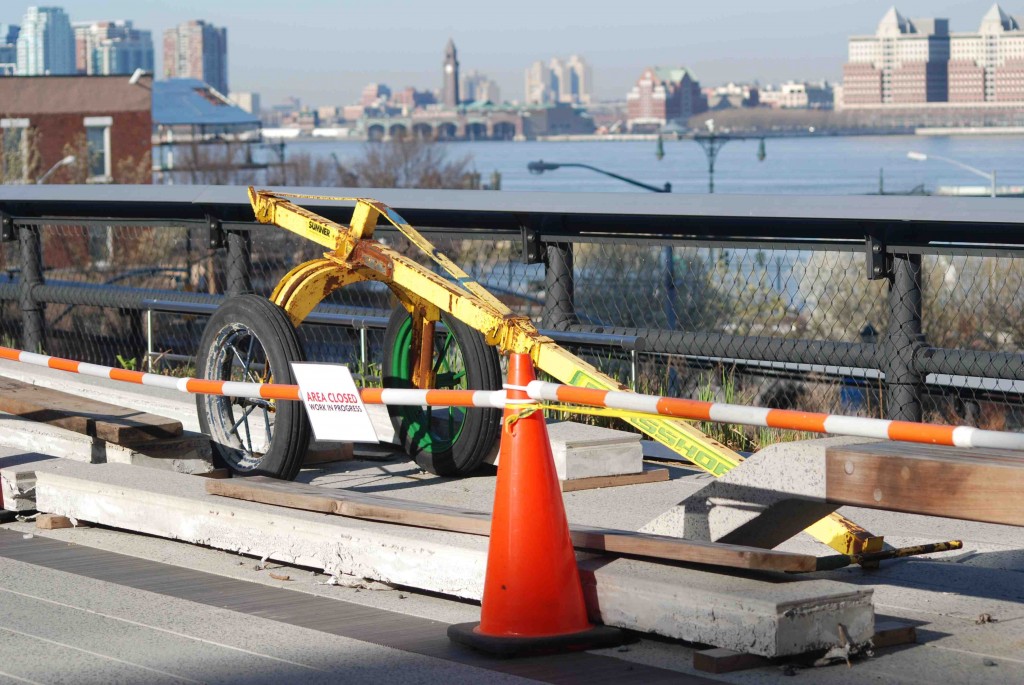 Earlier this week Joshua David and Robert Hammond, co-founders of Friends of the High Line, received the prestigious Vincent Scully Prize. Awarded by the National Building Museum in Washington, it was created to recognize extraordinary practice, scholarship or criticism in architecture, historic preservation and urban design. The namesake of the award and its first recipient was an art history professor at Yale University. New Yorkers may remember Scully best for his comment about the atrocity that replaced the majestic, Beaux-Arts Penn Station that was torn down fifty years ago this month: “One entered the city like a God. One scuttles in now like a rat.”
Earlier this week Joshua David and Robert Hammond, co-founders of Friends of the High Line, received the prestigious Vincent Scully Prize. Awarded by the National Building Museum in Washington, it was created to recognize extraordinary practice, scholarship or criticism in architecture, historic preservation and urban design. The namesake of the award and its first recipient was an art history professor at Yale University. New Yorkers may remember Scully best for his comment about the atrocity that replaced the majestic, Beaux-Arts Penn Station that was torn down fifty years ago this month: “One entered the city like a God. One scuttles in now like a rat.”
Paul Goldberger, in introducing the co-founders, spoke about the impossibility of the High Line, and “all the reasons why it couldn’t work.” I recently re-read David and Hammond’s High Line: The Inside Story of New York City’s Park in the Sky, the tick-tock of the entire reclamation and preservation story, and “impossible” is just the right word. The book is an unlikely page-turner, and I recommend it as a tonic for these very particular days when our government is shut down and it’s hard to believe in anything good in the public realm. The existence of the High Line is a miracle, pure and simple, and it shows that innovative, creative, beautiful — and impossible — things can be done in our communities.
There are dozens of people who helped make the High Line the place that it is: early supporters, both in and out of government, who gave invaluable advice and support to the fledgling Friends of the High Line; landscape architect James Corner and his team; architects Diller Scofidio + Renfro; Dutch plantsman Piet Oudolf; and a staff of incomparably talented and dedicated staff, both in the garden and the back office. David and Hammond are like dual conductors of a symphony orchestra: not the men who make the music but the ones who enable it. It’s worth watching their speech online — click here for the video on YouTube — because it not only recaps the whole story but it also conveys the energy and optimism that have driven the entire project from its earliest days. It’ll put you in a good mood, I promise.
David closes his comments by quoting the second winner of the Vincent Scully Prize, the great Jane Jacobs, whose love of neighborhood and city were inspirations to both men. But along this urban greenway that did so much to preserve a sense of wildness in the center of our thriving, growing, city, I hear Scully’s voice resonating. In the 1960s, he testified in hearings to protest Con Edison’s plan to build a massive power plant at Storm King on the Hudson River, some 60 miles north of Gansevoort Street, “at the very threshold of New York.” The victory to preserve Storm King marked the beginning of the modern environmental movement; it was the first miracle story in New York State, and every activist since has carried a bit of the mountain in his soul. Here’s what Scully said, some 50 years before the opening of the High Line:
“Storm King…is a mountain which should be left alone. It rises like a brown bear out of the river, a dome of living granite, swelling with animal power. It is not picturesque in the softer sense of the word, but awesome, a primitive embodiment of the energies of the earth. It makes the character of wild nature physically visible in monumental form. As such it strongly reminds me of some of the natural formations which mark sacred sites in Greece and signal the presence of the Gods; it preserves and embodies the most savage and untrammeled characteristics of the wild at the very threshold of New York. It can still make the city dweller emotionally aware of what he most needs to know: that nature still exists, with its own laws, rhythms, and powers, separate from human desires.”





















